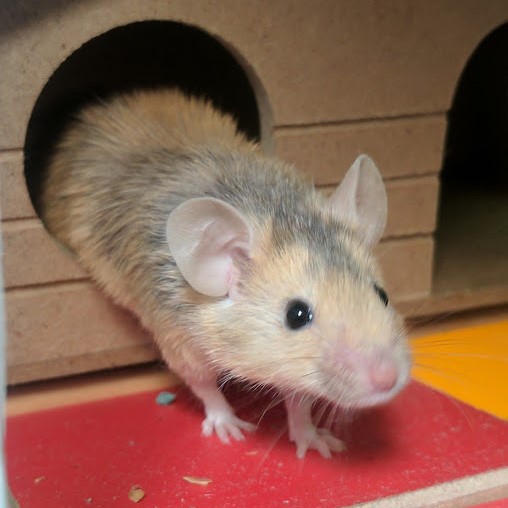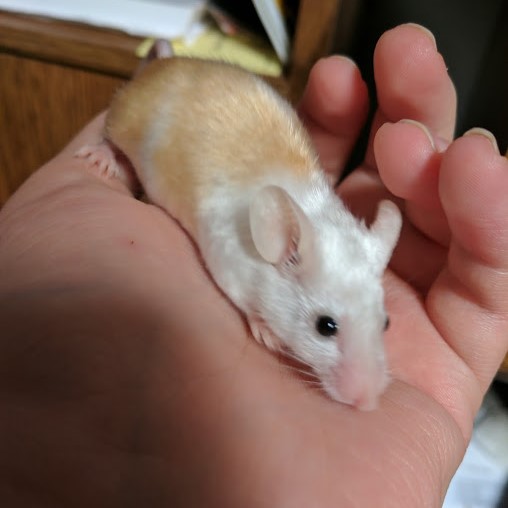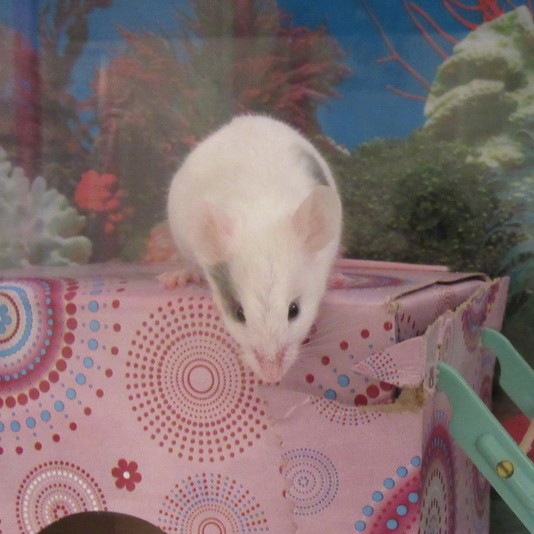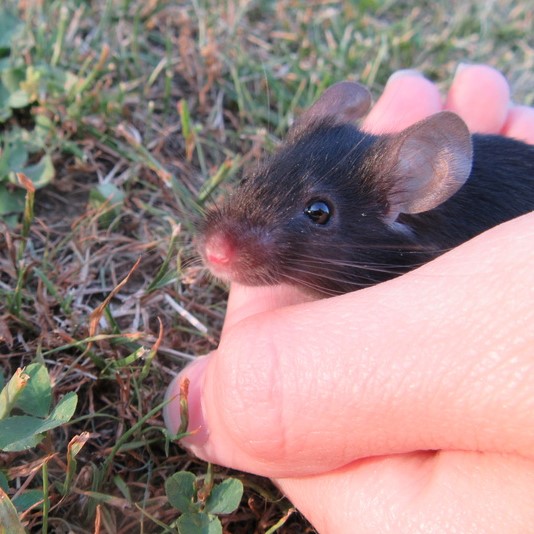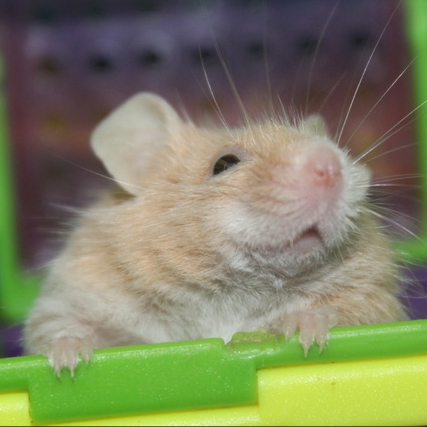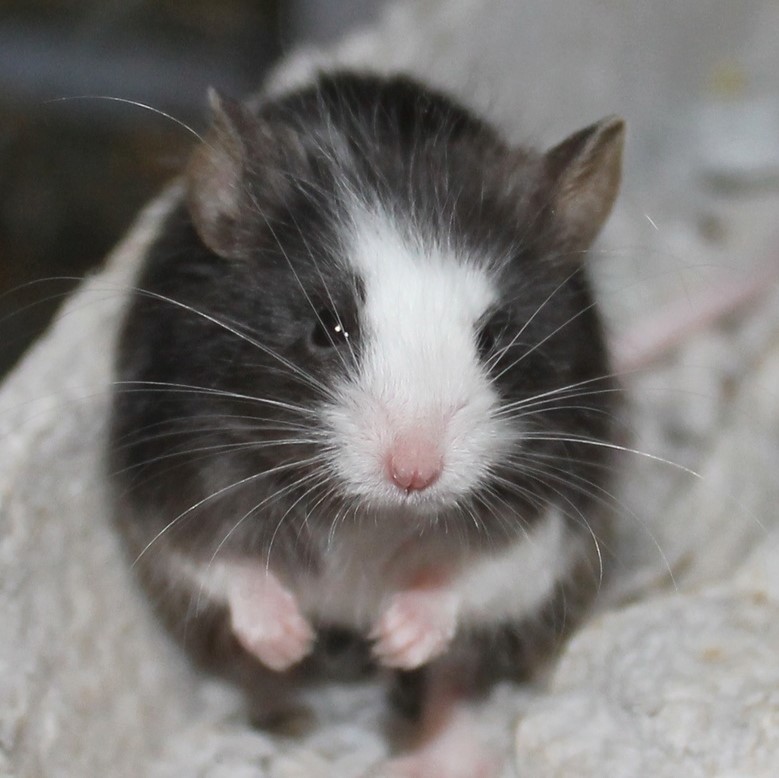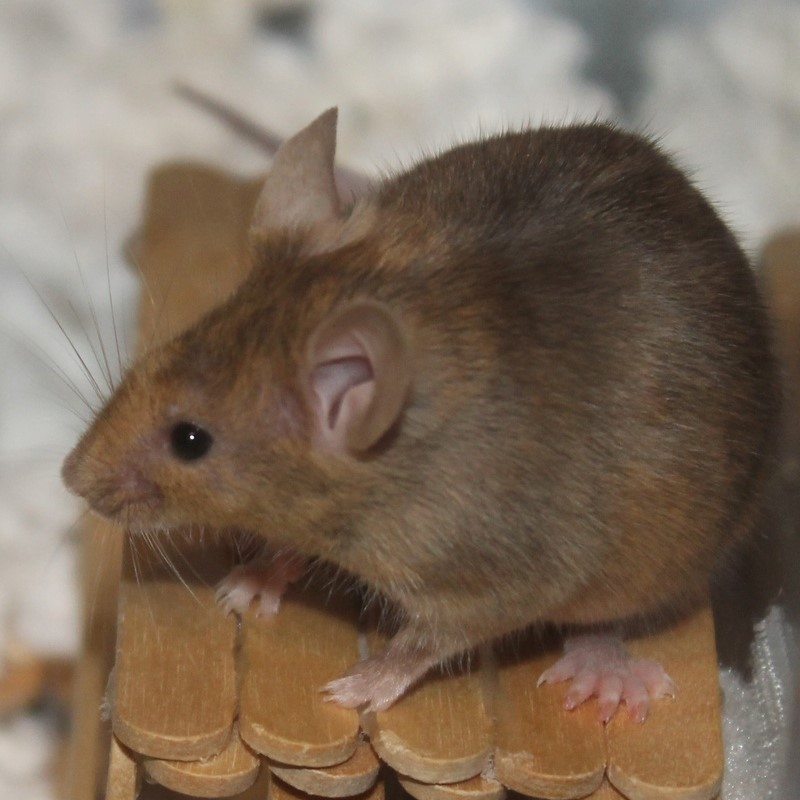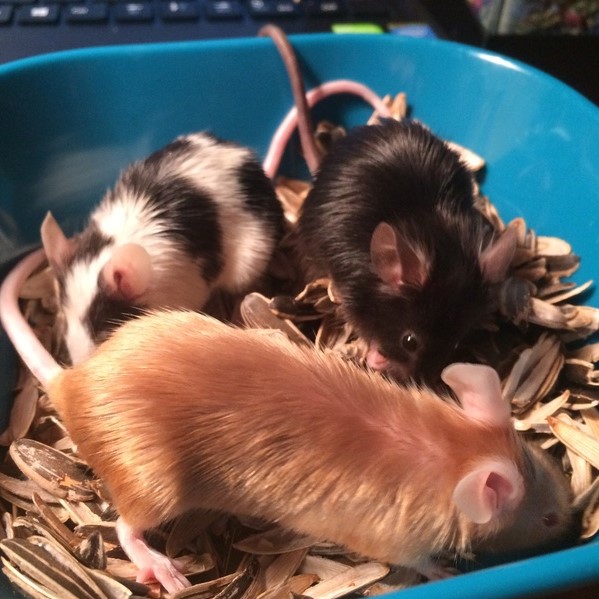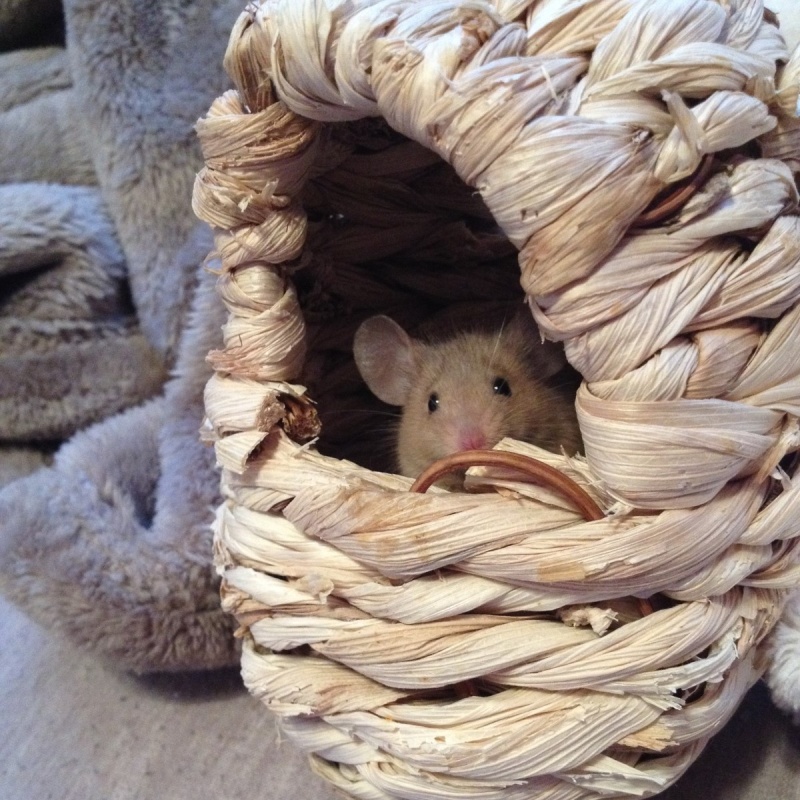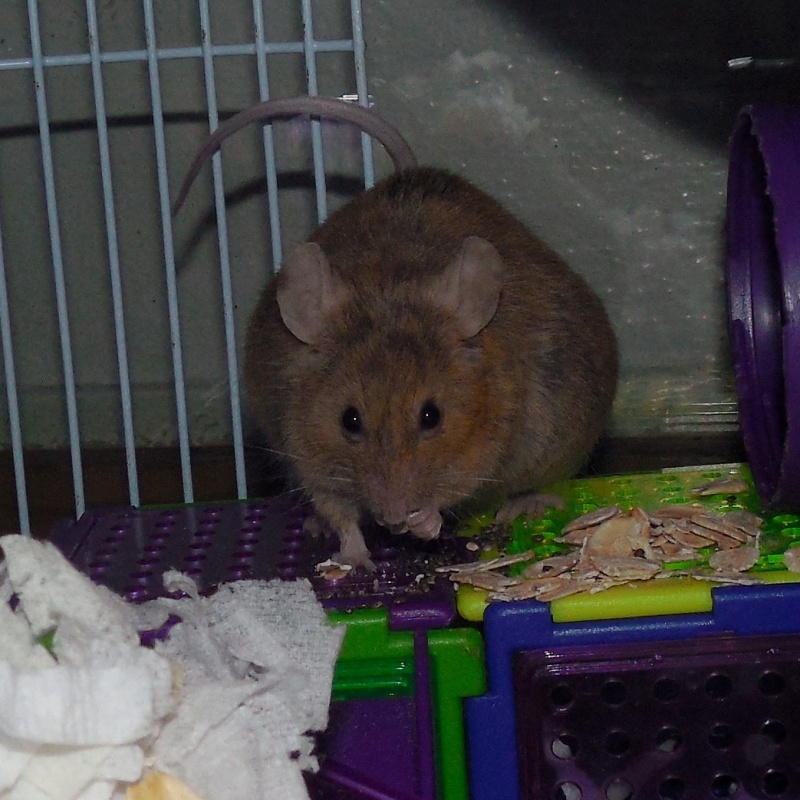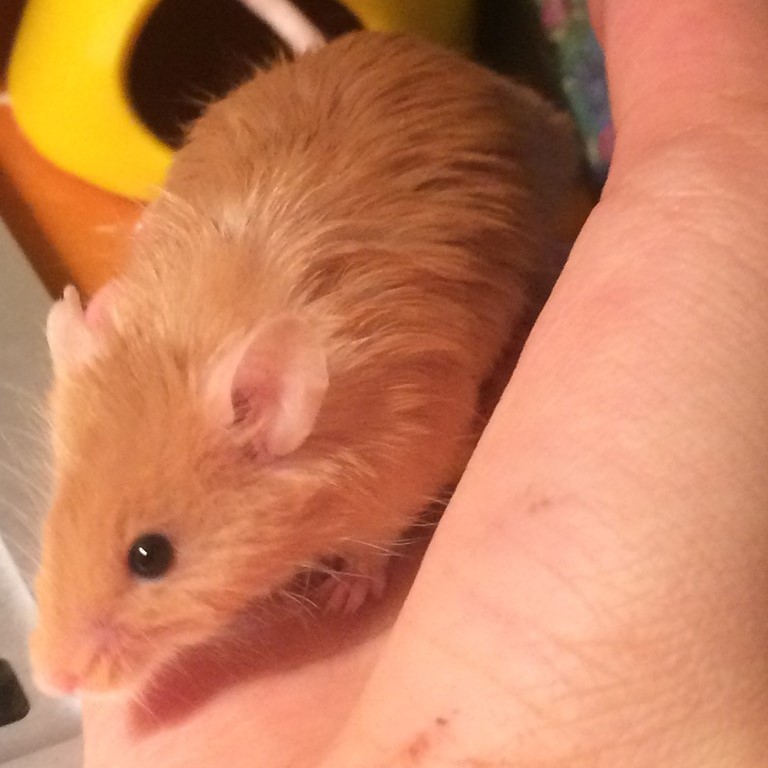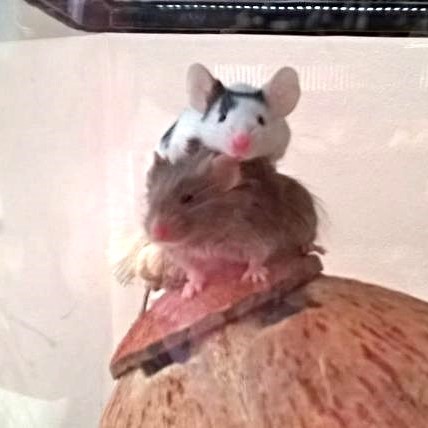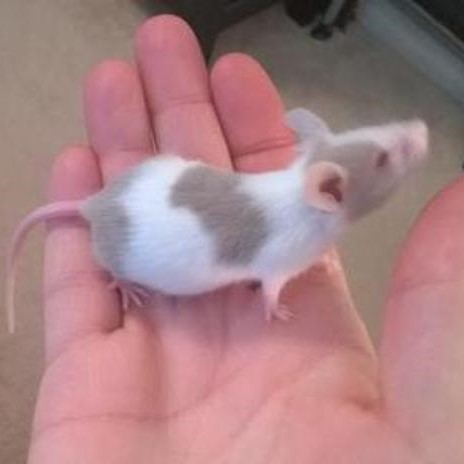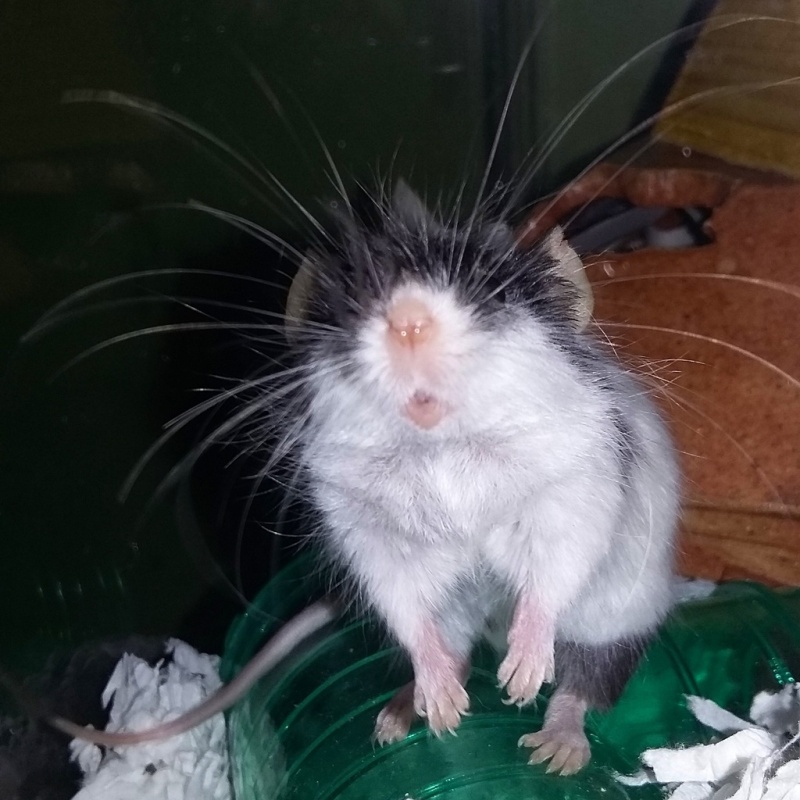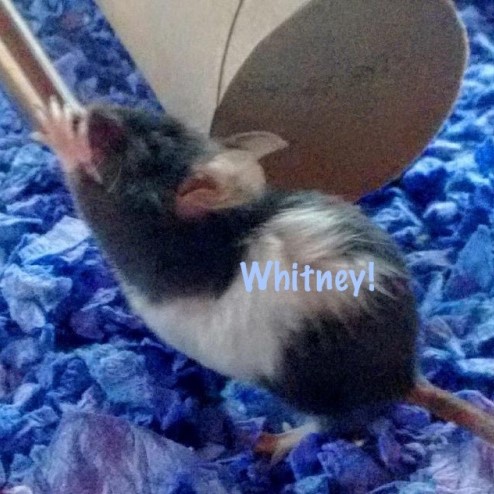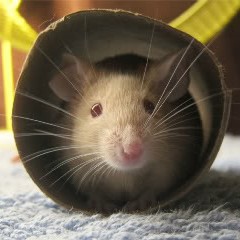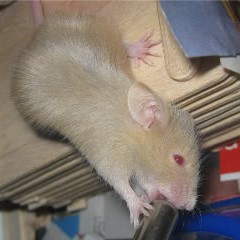Cleaning, Odor, and Bedding
Page 1 of 1
 Cleaning, Odor, and Bedding
Cleaning, Odor, and Bedding
| The content on this page was first published on The Fun Mouse website and has been reposted with permission. Please do not reproduce in any way. |
Cleaning
Mice are not dirty, contrary to some misguided beliefs; mice are actually extremely clean. You will be hard pressed to find a dirty mouse unless they are housed in a dirty cage.Cages should be cleaned at least once a week and wet spots should be taken out every day. Tanks and accessories such as solid tubes or wheels should be washed at least once a week or as necessary (exception: see 'Male odor'), which may be daily depending on your mice. Many people like placing their mice in a play area while cleaning. This area should be secure, fun, and still provide general necessities (food, water, shelter, etc).
For light cleaning you can use mild baby wipes and hand wipes or a cage cleaning spray from the pet store. Stay away from products that are scented or have aloe in the ingredients and check the warnings on the packaging as they will vary depending on type.
For deeper cleaning, unscented antibacterial soap or unscented dish soap work well. For the most part it's not necessary to use harsh chemicals, however diluted bleach (a cap full to a gallon) as well as vinegar (same delusion) work very well if needed. Whatever you use, make sure you can't smell the cleaning agent you used when the tank/accessory is dry.
Cleaning wood can be done by boiling it. Boiling will help extract the urine out of the wood. After boiling, rinse the wood and let air dry. Beware that wood warps when wet and water, especially boiling, often unbinds glued parts. It is very important to make sure that everything is fully dry before your mice are exposed.
How do I decrease odor?
Cleaning as described above will help with odor. Some mice choose to only use one spot to urinate, and scooping this small portion of wet bedding and replacing it with clean bedding every 1-2 days will help prevent odor, ammonia build up, and harmful bacteria. Some mice can be trained to use a litter box, especially those that already have a potty corner. You can give them a container (such as Tupperware, a jar, etc) or buy them a Hamster Potty. Note that the litter that comes with hamster potties is often unsafe for mice. It may help to use a different kind of litter in their potty, than in their enclosure. For instance, if you use Carefresh as a main bedding, you can try cob litter in the potty. Never use clay litter or products that contain added odor controlling substances such as baking soda or fragrances, as outlined in the sections below.Some owners recommend adding things to their water to help neutralize the smell. A product called Bio-odor has good over all reviews. Natural, pure real vanilla extract also has excellent reviews. It is important not to over use these things. For instance, vanilla contains alcohol, however in small amounts this will not give any adverse affects. Only use 1 drop per 8oz bottle. It is often recommended to take them off this for a couple weeks every 1-2 months. If you choose to add things to their water, make sure you observe their drinking habits to ensure that they don't stop drinking. Some owners report that mice stop drinking water if it tastes different.
Room air filters can also help with smell, but never use room air fresheners/deodorizers for mice as these are harmful to their sensitive lungs.
Male odor
Male mice tend to smell more than female mice do. This is contributed to their need to mark their territory. Not all males will do this and many males that do this will get better with age. To help combat their need to mark, it is recommended to leave one thing in their tank that smells like them. Studies show that males that are allowed to keep their nest don't mark as much as males that have their nest taken and replaced with clean nesting material. If you chose to do this, make sure you check that the bedding is clean. Males tend to keep their nest clean, but if it is dirty, replace it with clean bedding for health reasons. You can also try leaving one object with them that isn't cleaned. For instance, if they have a toy that isn't gross, don't clean it when you do the bucks weekly cleaning. Having one thing that smells like them will help because they will not have the need to re-mark as much. Lastly, if a buck smells females or other males it can cause them to mark worse. This includes the smells of other mice on your hands, if you had just touched another mouse. It also includes mice in the same room as they are and smells on any shared space, such as play areas.
Please don't let smell be your decision maker when choosing a pet. While some males may smell more than some females, they can be kept under control if you clean them weekly and try the tips on this page. Males are often more affectionate to humans than females. Many people prefer males to females as an overall opinion. You may read more about males and their personality at this link: https://www.petmousefanciers.com/t23-let-s-hear-it-for-the-boys
What kind of bedding or litter should I use?
When selecting a bedding or litter, it's a good idea to test as many as you can and then choose the one that fits you and your pets best. You should always double check the packaging on any type and brand of bedding for added baking soda or fragrance. These things pose health risks to mice if ingested and can irritate their sensitive respiratory systems.Before use, bedding should always be baked at 140°F (60°C) for 30 minutes in an oven or frozen at 0°F (-17°C) for 24 to 48 hours to help you prevent parasites getting to your mice. For more information on quarantining mouse bedding, visit our Quarantine page: https://www.petmousefanciers.com/t7-quarantine
Paper-based beddings
A paper based bedding is what we most often recommend using for mice because they're absorbent, non-toxic, soft, great for nesting and tunneling, and are the least likely to cause respiratory irritations and allergies. Always double check packaging for added odor controlling substances such as baking soda or fragrances.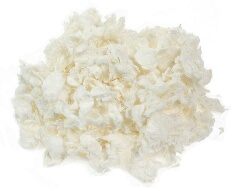
One of the most popular brands of commercial based bedding is Carefresh. The gray colored Carefresh should be used with extreme caution as it's known to be very dusty, however Carefresh Ultra (white) and the colored ones have much less dust. There are many other brands of paper-based commercial bedding such as Kaytee Clean and Cozy and Green Dreamzzz.
Shredded paper has the absolute lowest risk of allergies of all kinds of bedding available. It is also the cheapest bedding you will find. You can buy shredded paper at the store (brands such as Eco-bedding) or simply pick up newspapers or unused computer paper. Newspaper ink in the US is soybean based and safe, however glossy pages or paper with computer ink may be toxic and should not be used.
Shredded paper is a great addition to other beddings as well. Shredded paper (especially long strips or crumpled paper) puffs out, making tunneling easier for the mice. Many mice also seem to prefer shredded paper to anything else for nesting material.
The downfalls to shredded paper are that it can be time consuming to shred, it needs to be changed more often than some other beddings, and it does not eliminate odor as well as nearly all other types of bedding. A cosmetic downfall to shredded paper is ink from newsprint rubbing off. This is not a problem with plain paper, however.Wood-based beddings
Note that while some wood-based beddings are reasonably safe, all of them have some risks. Wood allergies are a common complaint, known to cause symptoms such as itching, sneezing, hair loss, respiratory issues, etc. For more information on allergies, itching, and hair loss, visit this link: https://www.petmousefanciers.com/t17-hair-loss-and-itching- Soft Granule

This is wood manufactured into a form which is close to paper. It isn't as fluffy or good for nesting and tunneling as paper based beddings but it is absorbent and has good odor control. It has the same allergen risks as any other wood bedding. - Aspen
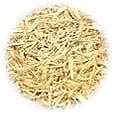
Aspen is a reasonably safe bedding. Because of the structure of aspen, it makes a great bedding for mouse tunneling. A common complaint of aspen is that it is rough/scratchy but that is partially due to brand.
Also note that not all aspen is created equal! There have been reports of mice (and people) being allergic to some brands and not others. If you use aspen, it is recommend that you get a quality brand (such as Teklad) that has minimal dust. Kaytee aspen is among the worst available. - Kiln-dried Pine/Softwood shavings

Kiln-dried (treated) pine is a bedding commonly found in stores, and often attacked for being harmful. The truth is that kiln-dried pine is no more risky than any other wood bedding out there. There is NO *true* evidence that it is any more harmful than any other wood bedding, including aspen (aspen being the one it is most commonly compared to). The concern about pine is the phenols in it that protect the tree from parasites (note that all trees have some kind of defense against parasites, not just pine). Treated pine has phenols baked out (kiln-dried) at extreme temperatures (beyond what your home oven could heat to). - Cedar
Never use cedar bedding for any small animals! All cedar bedding, to one extent or another, contain Plicatic acid. Plicatic acid causes the body to release antibodies receptors which are found in plasma (blood) and other body fluids. In other words, an animals' body is trying to fight it off. Think of the common cold and how the body releases antibodies to fight it off. Plicatic acid causes inflammatory/allergic reactions and asthma. A mouse that is only exposed to it for a short time (less than 24 hours) can have major break outs on the skin, excessive sneezing, wheezing, etc. Constant exposure for a few months will always lead to life-time immune problems. Less than 50% of the time will asthma completely go away, even after the cedar is removed. Even IF symptoms go away, the immune system is still effected and will never fully recover. Cedar is also very strong and perfume smelling. Cedar, as backed up by many studies, is the worst wood to be exposed to. Corn cob

Although corn cob isn't as absorbent as other types of bedding, it's good at controlling the ammonia in your mouse's environment. For this reason, it's a good choice to use as a layer under another type of bedding for extra odor control. Owners should be aware of moisture in the tank because it has a tendency to grow mold when it gets wet. While some mice don't like to walk on corn cob, others don't mind it and enjoy digging in it.Hay/Hay Pellets
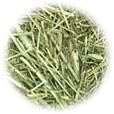
Hay, including the well known Timothy Hay, has been known to help odor. Some owners like to use pellets under another kind of bedding for added odor control. Hay neutralizes some odor and covers some up with its natural smell. Mice deeply enjoy nesting and tunneling in it. As with any bedding, there are cons. Hay is the number one carrier for parasites (such as lice and mites). If you use hay, make sure you freeze or bake it to kill any parasites it may be harboring. Also be sure that it is not moldy or have a musty smell to it at all. This can be deadly to mice.Hemp

Hemp is a great bedding for mice that like to tunnel. The structure of the hemp allow for easy tunneling. Hemp both absorbs odor and covers it up with its natural scent, though the scent is not as strong as most wood bedding. Hemp bedding does pose an allergy risk, but not as high as wood bedding to the best of our knowledge. A common complaint of hemp is that it is rough/scratchy. It is very important to freeze or bake this bedding before use.Soil

Soil has been reported as the best bedding for eliminating odor. If soil is used, some standard precautions need to be taken. Because animals freely walk (and fly) among our yards and may track disease, bacteria, etc., soil from your yard is of a higher risk than sterile soil bought from the store. If you choose to use soil, it is advised that you buy sterile, organic potting soil with no chemicals (fertilizers, etc.) added. It is also very important to make sure soil is frozen or baked before use to help prevent parasites and fungus.Cat Litter
*Warning* Some cat litters can be used for mice, however, some are deadly. For instance, Yesterdays news is okay, but you should never ever use clumping cat litter. If ingested, the litter can get bound up in the body, such as in the throat, digestive tract, or urinary tract (going up the urinary opening), causing infection and even death. Always double check packaging for added odor controlling substances such as baking soda or fragrances.Cotton
Never use cotton anywhere in your mouse tank. If cotton is ingested it can cause choking and/or bind up the digestive tract of a mouse, resulting in death. A common product marketed for pocket pets that is cotton goes by the name "Fluff." Never allow any pocket pet contact with this product or any product like it.
Last edited by Peachy on Wed 13 Dec 2017, 8:43 am; edited 4 times in total (Reason for editing : Information updated)
CallaLily- Hero Member

- Join date : 2016-04-03
Posts : 3937

mouseboy and him0313 like this post
 Similar topics
Similar topics» Mouse bedding or Reptile bedding?
» Strong Odor
» Tips for eliminating cage odor?
» mouse odor
» Cleaning
» Strong Odor
» Tips for eliminating cage odor?
» mouse odor
» Cleaning
Page 1 of 1
Permissions in this forum:
You cannot reply to topics in this forum










